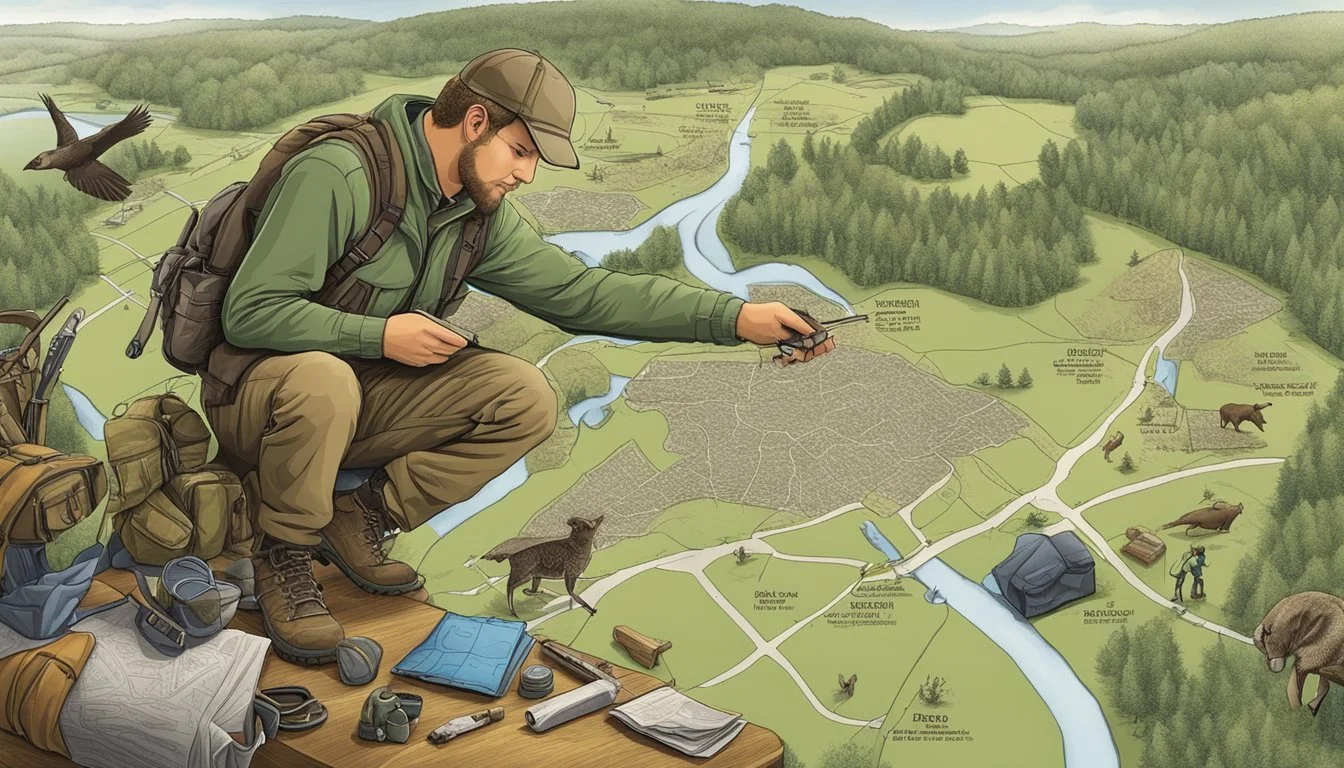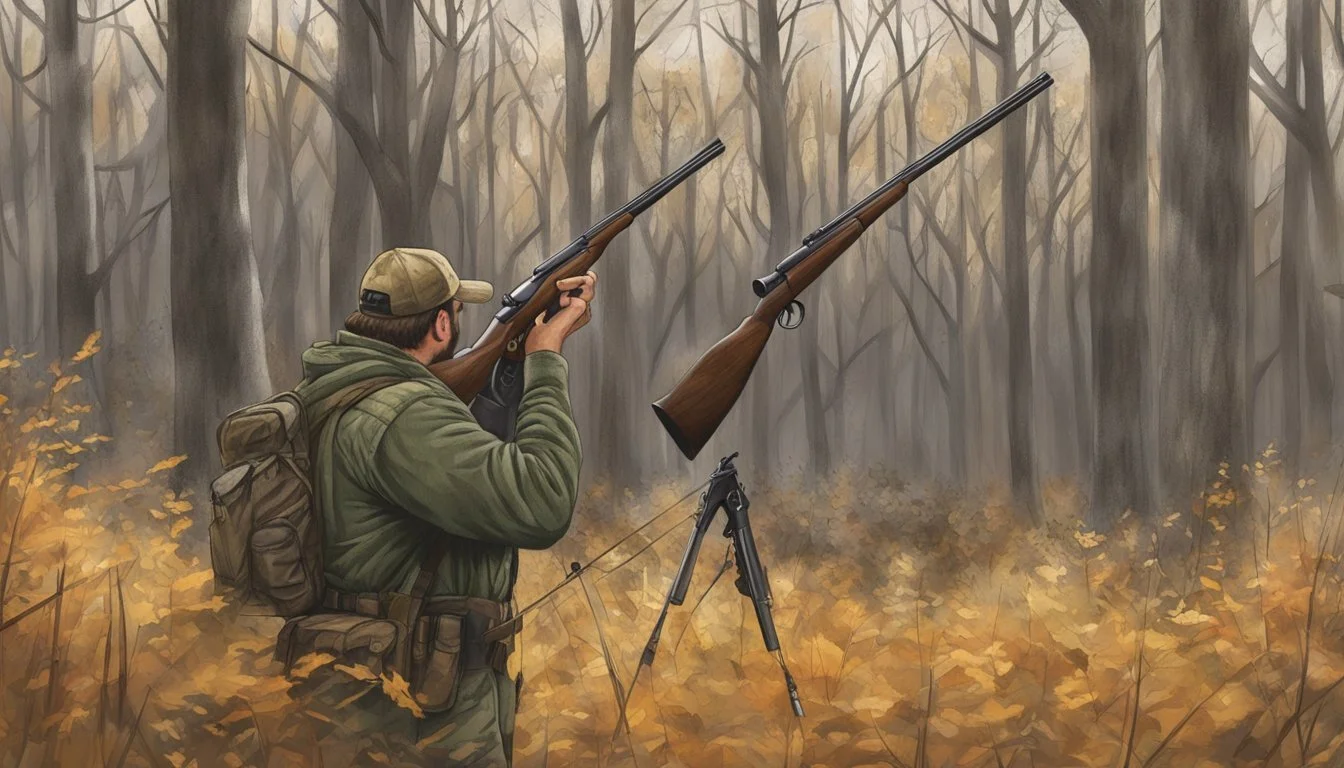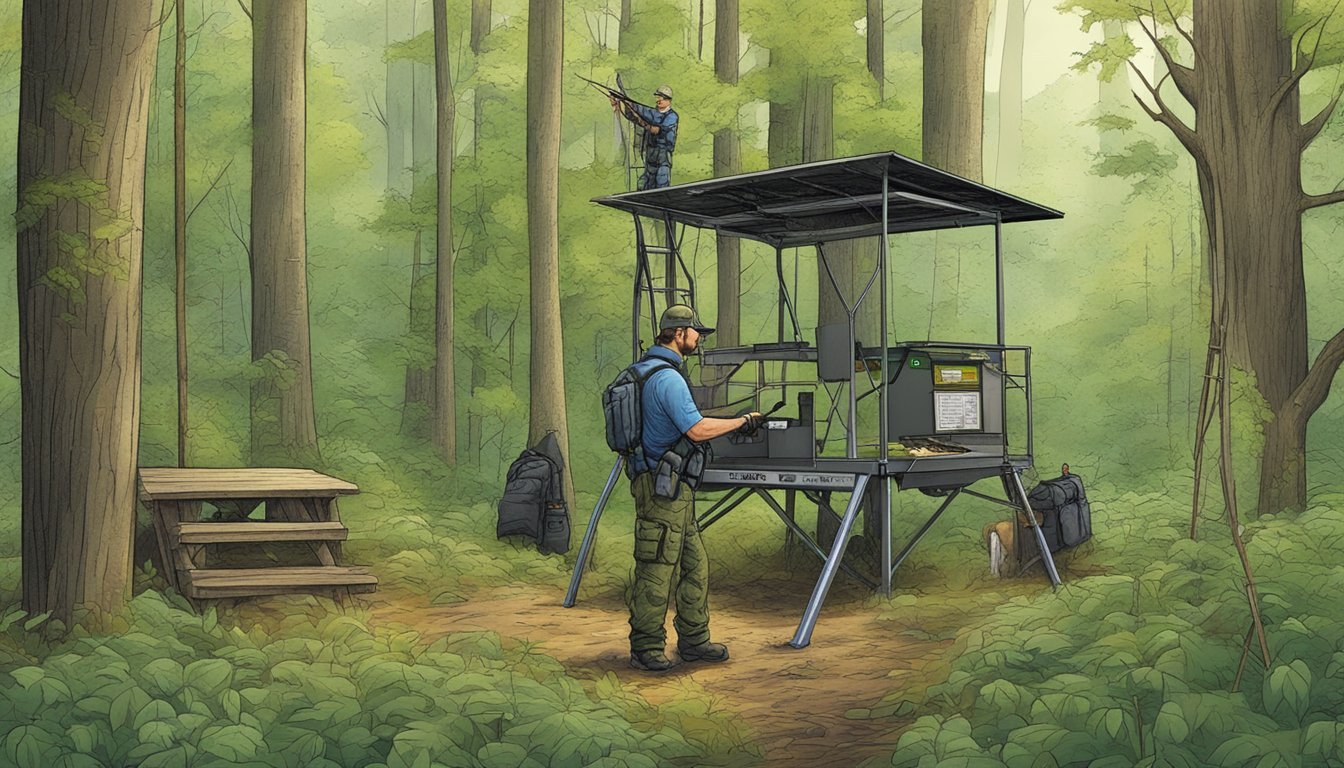Hunting Leases Ohio
Your Guide to Securing Prime Hunting Grounds
Ohio offers a diverse and abundant hunting landscape, attracting enthusiasts seeking game ranging from big to small. The state's hunting grounds boast a range of species, including deer, turkey, and various small game and furbearers. To accommodate hunters and landowners, hunting leases have become a popular method to secure private land for hunting. These leases provide a mutually beneficial arrangement, granting hunters access to prime territories while offering landowners a way to earn income from their land.
Hunting leases in Ohio vary in scope and can be tailored to hunters' preferences, including the type of game and the desired hunting experience. Land typically available for lease can range from smaller woodlots to vast tracts encompassing over a thousand acres. By engaging in a lease agreement, hunters gain the opportunity to hunt in less pressured environments compared to public lands, often leading to higher success rates and a more enjoyable outdoor experience.
With an array of options, Ohio positions itself as a prime location for hunters seeking leases. Services that facilitate these connections often provide detailed information on available properties, including topographical maps and specific hunting conditions. They cater to individuals and hunting parties by offering different lease terms, from short-term day hunts to seasonal or annual arrangements. These leases are not only a tool for managing and conserving wildlife populations but also for fostering responsible land stewardship and enhancing the hunting heritage in Ohio.
Understanding Hunting Leases in Ohio
In Ohio, hunting leases are formal agreements granting hunters access to private land for hunting. They establish important terms regarding duration, liability, and use of the property.
Types of Hunting Leases
Short-Term Leases:
Duration: Typically for a season or specific hunting period.
Characteristics: Lower cost, less commitment.
Long-Term Leases:
Duration: Can span multiple years.
Characteristics: Greater stability, potential for land management by the hunter.
Acreage and Pricing:
Variables such as size, location, and game type influence cost.
Leases range from small plots to extensive tracts of land.
Benefits for Landowners and Hunters
For Landowners:
Income: A supplemental revenue source from leasing their land.
Land Management: Hunters often contribute to land maintenance and monitoring.
For Hunters:
Access: Opportunity to hunt on private lands that may offer a better game.
Exclusivity: Less competition compared to public hunting grounds.
Both parties often consider liability and insurance to protect their interests in the arrangement. Landowners can minimize legal risk by clearly outlining rights and responsibilities in the lease, while hunters can ensure they comply with the terms to maintain access.
Key Considerations When Choosing a Lease
Choosing the right hunting lease in Ohio requires careful consideration of various factors including price, liability, and the specifics of the land use. It is important to thoroughly understand the terms of the lease to ensure it aligns with the needs and responsibilities of both parties involved.
Determining Lease Prices
Price is a critical factor in hunting leases, as it needs to reflect the value of the property and the hunting experience. Lessees should consider the land's wildlife population, habitat quality, and the availability of resources such as water and food plots. Prices vary widely, often charged per acre or based on the quality of game available. It's common for leases to include structures such as stands, which can affect pricing, and some landowners may charge extra for amenities like ATV use.
Legal and Liability Issues
Lessees should address liability issues before entering a hunting lease. It is recommended that landowners maintain adequate liability insurance to protect against accidents. The lease agreement should clearly outline who is liable in the event of an incident. An effective lease agreement will include provisions that protect the landowner while allowing for responsible use by the lessee. Legal considerations dictate that leases should be written and signed, and notarized if exceeding three years in duration.
Access and Usage Rights
Understanding and defining access and usage rights is essential to avoid misunderstandings. The lease should specify the areas where hunting is allowed, and these boundaries should be respected by the lessee. It should detail permissible activities, such as whether food plots may be cultivated, if trail cameras can be installed, and the placement and use of stands. Usage rights may also set parameters for the type of hunting (e.g., bow or firearm) and any restrictions on vehicle use, highlighting if ATV use is permissible.
Habitat and Game Management
Effective habitat and game management on hunting leases in Ohio are crucial for sustaining diverse wildlife populations and ensuring quality hunting experiences. Landowners and hunters often collaborate to enhance the habitat which in turn, provides better opportunities for hunting various game species.
Improving Wildlife Habitat
Landowners can take steps to improve wildlife habitat by establishing cover areas and maintaining a mixture of land types. They can do this by:
Planting native grasses and shrubs to create thickets for cover.
Preserving wetlands which are essential for waterfowl and other species.
Rotating crops and leaving standing grain to provide food and cover during the off-season for species like turkey and pheasant.
Managing Timber and Food Plots
Timber and food plot management are key aspects of a well-maintained hunting lease:
Timber: Selective cutting can open the canopy to promote undergrowth that serves as cover and forage for wildlife.
Food Plots: Strategic placement of food plots with a variety of plant types meets the dietary needs of different species throughout the year.
Here's a simplified table of common food plot plantings:
Season Plants Spring/Summer Clover, Alfalfa, Soybeans (how long do soybeans last?) Fall/Winter Turnips, Brassicas, Corn
Game Species Available for Hunting
Ohio offers a rich variety of game species that benefit from habitat and game management:
Big Game: White-tailed deer thrive in managed woodlands with adequate food and cover.
Small Game & Furbearers: Rabbits, squirrels, and furbearers utilize the underbrush and edges of fields.
Upland Bird: Pheasants and turkeys benefit from a mix of open fields and wooded areas.
Waterfowl: Ducks and geese are attracted to wetlands and managed crop areas that serve as rest and feeding sites during migration.
These efforts contribute toward maintaining and enhancing populations of these and other game species, providing hunting opportunities and ecological benefits.
Selecting the Right Hunting Lease
When looking for an Ohio hunting lease, a hunter must consider the land's potential for game and the terms of the lease agreement to ensure it aligns with their needs.
Evaluating Land Quality and Potential
Hunters seeking a lease in Ohio should first assess the quality of the land and its potential to support the type of game they are interested in. Essential factors to consider include:
Habitat Diversity: A variety of habitats such as woods, fields, and water sources signifies a healthy ecosystem that can sustain big game species.
Food Sources: Availability of crops, mast (such as acorns), and food plots increase the likelihood of consistent game presence.
Water Sources: Look for properties that offer reliable water sources which are vital for wildlife.
Signs of Game Activity: Evidence such as tracks, scat, and game trails should be inspected.
Boundary Clarity: Clear and well-marked boundaries ensure legal compliance and good neighbor relations.
It is beneficial to visit the property in person to get a complete understanding of its potential.
Understanding Lease Agreements
A lease agreement is a crucial document that outlines the relationship between the landowner and the hunter. Key aspects that should be understood in a lease agreement include:
Duration of Lease: Whether it's a seasonal or yearly arrangement, understanding the term length is vital.
Cost: Know the financial commitment including any extra fees for amenities or additional hunters.
Permissions and Restrictions: What hunting methods are allowed, and what are the specific game species you can hunt?
Liability and Insurance: Clarify who holds liability in the event of accidents or damages.
Renewal and Termination Clauses: Understand the conditions under which the lease can be renewed or terminated.
Before signing, hunters should read the agreement thoroughly and negotiate any terms that do not meet their expectations or needs. It is also advisable to have a lawyer review the contract, especially for long-term or high-value leases.
Additional Amenities and Considerations
When exploring hunting leases in Ohio, prospective lessees should consider the availability of additional amenities that can enhance their hunting experience. These may include lodging options and the services of outfitters and guides.
Lodging and Cabin Options
Hunters in Ohio have the opportunity to choose leases that come with lodging or cabin options, which can be particularly beneficial for multi-day hunting trips. These accommodations range from basic cabins to more luxurious, fully-furnished lodges, providing a comfortable stay close to the hunting site.
Outfitter and Guide Services
For those new to hunting in Ohio or looking for a structured hunting experience, outfitter and guide services can be an invaluable addition to a hunting lease. Outfitters typically offer packages that may include gear, hunting strategies, and local wildlife knowledge. Guides are available for hire to assist in navigating vast tracks of land and may offer expert advice on the best hunting spots, especially near geographic landmarks like Lake Erie.
Seasonal and Regional Opportunities
The diverse landscape and varying climate of Ohio provide hunters with an assortment of seasonal and regional opportunities. From the wooded hills of Meigs to the waterfowl-rich shores of Lake Erie, each area presents unique prospects for various types of game.
Hunting Seasons in Ohio
Ohio regulates hunting seasons with precision, allowing hunters to plan their activities in alignment with wildlife conservation efforts.
White-tailed Deer: The state offers several deer hunting seasons, with gun seasons typically starting in December and archery season opening in the fall and extending into February.
Turkey: Spring and fall turkey hunting seasons are available with specific dates varying by year.
Small Game: Includes squirrel and rabbit seasons, commencing in the fall and extending through January.
Hunting season dates are subject to annual adjustments, and hunters should consult the Ohio Department of Natural Resources for current information.
Regional Highlights: Meigs, Pike, and Lake Erie
Meigs County:
Known for its dense woodland, Meigs County provides a habitat for white-tailed deer and turkey, making it a prime location for both bow and firearm hunting.
Pike County:
Home to Ohio's big bucks, Pike County offers hunting leases with a mix of agricultural lands and hardwood forests, coveted for their trophy deer opportunities.
Lake Erie Region:
Lake Erie's shores and surrounding wetlands are a haven for waterfowl, offering seasonal leases for duck and geese hunting which peaks during the migration seasons in the fall and winter.
Each region in Ohio offers hunters distinct experiences, terrain, and wildlife, ensuring a varied and fulfilling hunting venture for enthusiasts of all levels.
Safety and Ethical Hunting Practices
When engaging in hunting activities on leased properties in Ohio, hunters are obligated to follow safety protocols and ethical hunting practices. These guidelines are vital to ensure responsibility and respect towards wildlife and fellow hunters.
Safety Measures:
Firearm Handling: Hunters should always assume that all firearms are loaded and handle them with care. Muzzles must be pointed in a safe direction, and fingers should be off the trigger until ready to shoot.
Hunting Gear: Safety gear, including blaze orange attire and eye and ear protection, is essential for visibility and to protect one's hearing and vision during the hunt.
Communication: Regular communication with other members of the hunting party and landowners is crucial to prevent accidents and misunderstandings.
Ethical Considerations:
Shot Placement: Hunters should strive for clean and efficient shot placement to minimize animal suffering and ensure a swift harvest.
Adherence to Bag Limits: Hunters must respect established bag limits to maintain ecological balance and sustainable game populations.
Reporting: Legal requirements include timely reporting of harvested game to state authorities, which aids in wildlife management and conservation efforts.
Hunting leases should clearly outline safety rules, permissible hunting locations, and ethical expectations, protecting both the landowner's rights and the hunter's privileges. By honoring these practices, hunters contribute to the carrying on of a responsible and respected hunting tradition in Ohio.
Navigating Legal Requirements
In Ohio, engaging in hunting leases involves understanding state-specific statutes and ensuring proper documentation to safeguard the interests of both landowners and hunters.
State Regulations and Permits
Ohio imposes certain legal necessities on individuals seeking to hunt or trap on leased land. The state requires that hunters and trappers obtain the appropriate licenses and permits before participating in these activities. Besides securing personal licenses:
Hunters must ensure that their activity complies with Ohio’s hunting regulations, which dictate the seasons, methods, and types of wildlife permitted for hunting.
Trappers also need to adhere strictly to state trapping guidelines, which include species-specific trapping seasons and the types of traps that are allowed.
Landowners and hunters typically need to maintain records of these permits to demonstrate compliance with state law.
Landowner Policies and Restrictions
Landowners in Ohio opting to lease their land for hunting must create clear policies that are congruent with state legislation. These policies should be outlined in a written lease agreement, which typically establishes:
The precise location and acreage of land being leased.
The landowner's expectations and restrictions on the type of hunting or trapping permitted.
The duration of the lease.
When leasing property, landowners are advised to address liability and insurance matters to minimize the risk of legal repercussions in the event of accidents or damage. Ohio’s Recreational User Statute relieves landowners from the duty of keeping leased land safe for certain recreational purposes, including hunting, and protects them from liability for injuries to individuals on their property without charge, provided they do not willfully or wantonly cause harm.
The lease should also clarify that the landowner does not assume responsibility for injuries resulting from hunting activities. This encourages lessees to carry their own liability insurance to cover potential risks.
Contact and Additional Resources
For individuals interested in hunting leases in Ohio, HLRBO (Hunting Lease Radio Beacon Online) offers a comprehensive platform for searching private hunting leases. Inquirers can visit their website for a detailed search based on state, county, and hunting types or use their contact page for further questions.
HuntingLocator.com provides listings like the "Ohio Ag Land & Woods" in Muskingum County, of varying acreage. For more information or to secure a lease, potential lessees should reference the contact details on their listings.
Hunters seeking a mix of agricultural and wooded land can consider Bowhunting Ohio Whitetails. They maintain a portfolio of 20 to 400-acre leases. Interested parties are advised to join their "First Look" group for early access to new leases.
For direct inquiries about specific properties, like the 151-acre Kanabec County property, or broader lease questions, Base Camp Leasing can be contacted through their website. They provide information on available leases, including the number of hunters allowed and habitat types.
The Ohio Farm Bureau publishes resources such as "Our Ohio Weekly" that discusses hunting leases as a revenue stream for landowners. For more detailed guidelines on leasing and landowner rights, visiting the Ohio Farm Bureau's official site is recommended.
Below is a summary table with contact points for a selection of resources related to Ohio hunting leases:
Entity Contact Method Resource Type HLRBO Website Contact Page Hunting Lease Listings HuntingLocator.com Listed Contact Details Hunting Lease Details Bowhunting Ohio Whitetails Join "First Look" Group Hunting Lease Access Base Camp Leasing Website Inquiry Hunting Lease Specifics Ohio Farm Bureau Publication & Website Hunting Lease Insights
Prospective lessees should always reference official websites and contact the entities directly to ensure the most current and accurate information is obtained.
Hunting Success and Land Stewardship
Hunting leases in Ohio offer a symbiotic relationship between landowners, hunters, and the game species that inhabit these lands. They can create a framework for both successful hunting experiences and effective land stewardship.
Landowners who lease their properties benefit financially while contributing to wildlife management efforts. They often work in conjunction with hunters to maintain the health of game populations such as whitetail deer. The income from leases can be reinvested into the land to improve habitats and cultivate crops that are beneficial for both the game and the land’s overall fertility.
Hunting seasons are regulated to balance the game species populations. This management helps ensure sustainable hunting opportunities year after year. Hunters, in return, gain access to private lands that might offer a higher chance of success due to less hunting pressure and better managed wildlife populations.
Key Contributions to Stewardship:
Landowners: Foster responsible land usage, preserving natural habitats and ensuring the game species' prosperity.
Hunters: Assist in controlling animal populations to prevent overgrazing and crop damage, which can lead to improved ecological balance.
Impact on Crops:
Secures the land’s productivity by mitigating potential damage from unchecked wildlife populations.
By respecting the mutually beneficial nature of these agreements, both hunters and landowners contribute to conservation efforts within Ohio. They ensure the vitality of the ecosystems they utilize, which ultimately bolsters both game numbers and hunting success.
Closing Thoughts
In Ohio, hunting leases have become a significant part of wildlife management and rural economics. These agreements benefit both landowners, looking for additional revenue streams, and hunters seeking exclusive access to prime hunting lands. Numerous professional services now exist to connect landowners with responsible hunters, fostering relationships that ensure land is used sustainably and safely.
Key Advantages for Landowners:
Consistent Revenue: Financial benefits from leasing out hunting rights.
Land Stewardship: Hunters often contribute to the maintenance and conservation of the property.
Benefits for Hunters:
Access to Private Land: Opportunities to hunt in less-pressured environments.
Quality Game Management: Leases often involve managed habitats, promoting a healthier game population.
Entities like HLRBO and the Hunting Lease Network have streamlined the leasing process, offering vast selections of properties tailored to specific hunting preferences. The Ohio Farm Bureau has acknowledged the trend's positive impact, which echoes the general sentiment among stakeholders.
For landowners and hunters alike, entering into a hunting lease is a decision that should be carefully considered with all terms clearly laid out. Hunting leases ensure respect for the land, the wildlife, and the rights of all parties involved. As the practice continues to grow, it remains a testament to the collaborative efforts towards conservation and the appreciation of Ohio’s diverse outdoor heritage.











